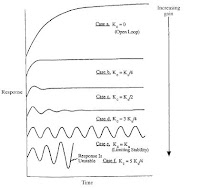There are essentially three levels of control systems available today: specialty, hybrid and integrated.
Specialty control system performs a single control discipline using development platforms, languages and communications that are specific, and often proprietary, to the discipline. Example include distributed control systems (DCSs), programmable logic controllers (PLCs) and motion controllers. While these systems control specific application types very well, it is generally more expensive overall for you to deploy them throughout your plant. With only about 20% of your total cost of ownership tied up in equipment cost, these specialty controllers are ultimately more difficult and expensive to develop, integrate and maintain.
Hybrid Control Systems can control more than one control discipline by employing multiple control engineers; multiple communication protocols at different system levels; and multiple services oriented architecture (SOAs) in the information space. These systems offer improvements in integration and information availability through the continued use of multiple development environments, control engines and protocols. This still mean that development and maintenance is not optimized, and integration between hybrid elements is still required.
Integrated control systems provide multidiscipline control across user’s internal supply chain, using a single communication protocol and a single SOA for information integration. Integrated systems optimize the plant’s internal supply chain between manufacturing areas to help reduce development, integration, maintenance and operational costs. These integrated systems improve information capabilities and convergence with the user’s IT system to help improve decision-making and use of production assets.
Monday, April 20, 2009
Thursday, April 9, 2009
Open Loop Versus Closed Loop
 It is common in industry to manipulate coolant in a jacketed reactor in order to control conditions in the reactor itself. A simplified schematic diagram of such a reactor control system. Assume that the reactor temperature is adjusted by a controller that increases the coolant flow in proportion to the difference between the desired reactor temperature and the temperature that is measured. The proportionality constant is Kc. If a small change in the temperature of the inlet stream occurs, then depending on the value of Kc, one might observe the reactor temperature responses shown in Figure.
It is common in industry to manipulate coolant in a jacketed reactor in order to control conditions in the reactor itself. A simplified schematic diagram of such a reactor control system. Assume that the reactor temperature is adjusted by a controller that increases the coolant flow in proportion to the difference between the desired reactor temperature and the temperature that is measured. The proportionality constant is Kc. If a small change in the temperature of the inlet stream occurs, then depending on the value of Kc, one might observe the reactor temperature responses shown in Figure.The top plot shows the case for no control (Kc = 0), which is called the open loop, or the normal dynamic response of the process by itself. As Kc increases, several effects can be noted. First, the reactor temperature responds faster and faster. Second, for the initial increases in Kc, the maximum deviation in the reactor temperature becomes smaller. Both of these effects are desirable so that disturbances from normal operation have as small an effect as possible on the process under study. As the gain is increased further, eventually a point is reached where the reactor temperature oscillates indefinitely, which is undesirable. This point is called the stability limit, where Kc = Ku, the ultimate controller gain.
Increasing Kc further causes the magnitude of the oscillations to increase, with the result that the control valve will cycle between full open and closed. The responses shown in Figure are typical of the vast majority of regulatory loops encountered in the process industries. On the figure shows that there is an optimal choice for Kc, somewhere between 0 (no control) and Ku (stability limit). If one has a dynamic model of a process, then this model can be used to calculate controller settings.
In Figure, no time scale is given, but rather the figure shows relative responses. A well-designed controller might be able to speed up the response of a process by a factor of roughly two to four. Exactly how fast the control system responds is determined by the dynamics of the process itself.
Subscribe to:
Comments (Atom)